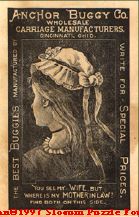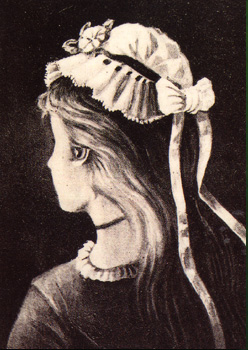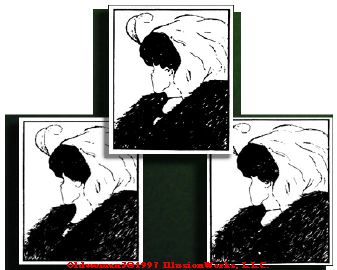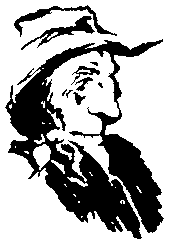|
|
||||||||||||
 |
||||||||||||
 |
|||||
 |
|||||
|
Do you see an old woman or a young woman in this illustration? They are
both present, but you will not be able to see both of them simultaneously.
Once you perceive both figures, see if you can get them to fluctuate back
and forth between the two interpretations.
What's Going on Here? This type of reversible figure concerns the meaningful content of what is interpreted by your brain from the same static image. Your perception of each figure tends to remain stable until you attend to different regions or contours. Certain regions and contours tend to favor one perception, others the alternative. Even though certain contours in this figure are ambiguous, your perceptual change in this case does not involve a figure/ground reversal. When the provocatively turned cheek becomes the cheek-nose, the rest of face abruptly changes following the lead of the nose. For example, if a certain line is tentatively identified as a nose, then the line below it must be the mouth and the shapes above it must be the eyes. These partial identifications mutually support one another to form a stable perception. The identifications of wholes and of parts will likewise be recprocally supportive, contributing further to the locking-in process. Your visual system tends to group like or related regions together. It does not present you with some odd mixture of the two alternatives. Attending to different regions or contours does tend to initiate a change of perception. However, it is not necessary to shift your gaze for a perceptual change to occur. It can be entirely spontaneous. If this image is looked at with a steady eye, it will still change, though less often. Researchers have stablized the image directly onto the retina to eliminate any effects that may arise from eye movements. Even uder these conditions, a perceptual reversal may occur. This indicates that higher cortical processing occurs that strives to make meaning out of a stable image presented to the retina. This illustrates once more that vision is an active process that attempts to make sense of incoming information. As the late David Marr said, "Perception is the construction of a description." History of this illustration For many years the creator of this famous figure was thought to be British cartoonist W. E. Hill, who published it in 1915. Hill almost certainly adapted the figure from an original concept that was popular throughout the world on trading and puzzle cards. This anonymous dated German postcard (shown at the top of the page) from 1888 depicts the image in its earliest known form. The 1890 example on the left shows quite clearly its association as "My Wife and Mother-in-Law." Both of these examples predate the Punch cartoon that was previously thought to serve as the figure's inspiration. The figure was later altered
and adapted by others, including the two psychologists, R. W. Leeper and
E. G. Boring who described the figure and made it famous within psychological
circles in 1930. It has often been referred to as the "Boring figure."
|
|||||

